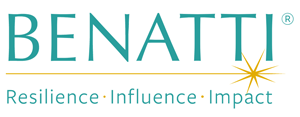We are in a waiting pattern right now, not knowing how work will look in many companies. What we do know is that even if we go back to work in the office, virtual meetings will continue and sometimes even make more sense from a time and value perspective. I used to have clients fly to Japan for a day-long meeting and then return to the USA jet-lagged and out of commission for a minimum of three days! There are opportunities now to assess when it makes sense to hold a meeting remotely.
How do you make the most impact in your remote meetings? Here are three best practices for remote meetings gathered from trial and error and lots of feedback.
1. Allocate some time for connection
If you’re running the meeting, include some time at the beginning of the meeting to check in and see how employees are doing. Gallup has identified “caring” as one of the indicators that predict employee and workgroup performance. If you are a participant, reach out and schedule time with colleagues on the call that you miss seeing and make time to really catch up.
Try these Connection Spark Strategies:
- Make a connection plan. These days, you may only be seeing colleagues on that little video screen. It is important to schedule catch-up time instead of only seeing each other at remote meetings.
- Make sure your department meetings have a fun element at least once a month. For example, ask everyone to share a favorite podcast or a new streaming series they like. Keep it simple but fun!
2. Be aware of your body language
Especially during a one-on-one meeting or a small group meeting, be aware of your facial expressions and nonverbal cues. You may not think others see you multi-tasking, but they do, and you may be perceived as being inattentive or distracted.
Try these Self-awareness Spark Strategies:
- Close email, Slack, and any other windows not needed in the meeting so you can look directly into the camera and appear focused.
- Remember to breathe, relax your shoulders, and smile when it feels genuine.
3. Be mindful of your scheduling
Space out your video meetings so you have a morning break and an afternoon break from being on video. It’s no wonder so many employees are complaining of burnout and video fatigue—it is not sustainable to have four or five hour-long meetings in a row every day.
Try these Productivity Spark Strategies:
- Try to end meetings a few minutes early so you have time to breathe and recharge before your next meeting.
- Be sensitive to colleagues’ schedules so they have time to get work done and not be over-scheduled.
- Make sure you have an agenda for every meeting to make the best use of everyone’s time.
Despite the turmoil, we have learned so much. Let’s all continue to show up the best we can remotely and remember how important recharge is throughout our day. Please email me at bbk@bethkennedy.com with a best practice you would like to share about adding value or being present on remote calls.

